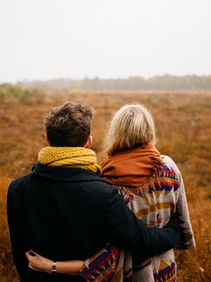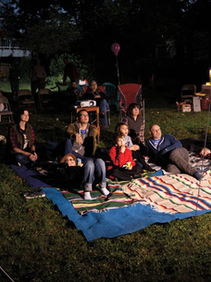Top 10 Enchanting Bird Bath Garden Ideas for a Thriving Backyard Sanctuary
- Joao Nsita
- 18 minutes ago
- 9 min read
Creating a bird bath garden is more than just providing a water source for feathered friends; it's about crafting a sanctuary that invites nature into your backyard. A well-designed bird bath garden not only attracts a variety of birds but also adds a touch of charm and tranquility to your outdoor space. By incorporating thoughtful design elements and understanding the needs of your avian visitors, you can create a thriving ecosystem that benefits both wildlife and your garden. Here are the top 10 enchanting bird bath garden ideas to inspire your own backyard sanctuary.

10. Choose the Right Bird Bath
The foundation of your bird bath garden is the bird bath itself. Selecting the right one can make all the difference in attracting a diverse range of birds.
Types of Bird Baths
Pedestal Bird Baths: These classic designs feature a basin elevated on a pedestal, making them easily accessible for birds.
Hanging Bird Baths: Ideal for smaller spaces, these can be hung from tree branches or shepherd's hooks.
Ground-Level Bird Baths: Placed directly on the ground, these are perfect for birds that prefer to bathe at ground level, like robins and sparrows.
Features to Consider
Depth: Ensure the bath is shallow enough for birds to bathe safely, typically no more than 2-3 inches deep.
Material: Choose durable materials like concrete, metal, or ceramic that can withstand the elements.
Size: Consider the size of your garden and the types of birds you want to attract when selecting a bird bath.

9. Create a Natural Setting
Birds are more likely to visit a bird bath that blends seamlessly with its natural surroundings. Creating a natural setting around your bird bath can make it more inviting and appealing.
Designing a Natural Setting
Plant Selection: Surround the bird bath with native plants, shrubs, and trees that provide cover and food for birds.
Landscaping: Use rocks, logs, and other natural elements to create a rustic and inviting landscape.
Camouflage: Position the bird bath near natural hiding spots where birds can quickly retreat if they feel threatened.
Benefits of a Natural Setting
Safety: Birds feel safer when they have places to hide and perch nearby.
Aesthetics: A natural setting enhances the overall beauty of your garden.
Biodiversity: Attracts a wider variety of bird species, contributing to a healthier ecosystem.

8. Provide Clean Water
One of the most important aspects of maintaining a bird bath is ensuring that the water remains clean and fresh. Birds are attracted to clean water sources and will return frequently if they know they can rely on it.
Tips for Maintaining Clean Water
Regular Cleaning: Clean the bird bath regularly to remove algae, debris, and prevent the buildup of harmful bacteria.
Water Changes: Change the water every few days, especially during hot weather, to keep it fresh and inviting.
Aeration: Consider adding a small fountain or dripper to keep the water moving and aerated, which can help prevent mosquitoes from breeding.
Benefits of Clean Water
Health: Clean water promotes the health and well-being of the birds that visit your garden.
Attractiveness: Birds are more likely to visit and return to a bird bath that consistently offers clean water.
Ecosystem: Maintains the overall health of your garden ecosystem by preventing the spread of diseases.

7. Incorporate Multiple Water Sources
Incorporating multiple water sources in your garden can attract a wider variety of birds and create a more dynamic and engaging space.
Types of Water Sources
Fountains: Adding a fountain can provide the soothing sound of running water, which can attract birds and create a calming ambiance.
Ponds: A small pond can serve as a water source for birds and other wildlife, adding biodiversity to your garden.
Misters: Misters can provide a gentle spray of water, which can be particularly appealing to birds during hot weather.
Benefits of Multiple Water Sources
Diversity: Attracts a wider variety of bird species with different water preferences.
Aesthetics: Adds visual interest and enhances the overall beauty of your garden.
Ecosystem: Supports a healthier and more diverse ecosystem by providing water for various types of wildlife.

6. Add Plants that Attract Birds
Incorporating plants that attract birds can enhance the appeal of your bird bath garden and provide additional food and shelter for your feathered visitors.
Plant Ideas
Native Plants: Choose native plants that are well-adapted to your local climate and provide food and shelter for birds.
Berry-Producing Plants: Plants like holly, elderberry, and serviceberry provide a valuable food source for birds.
Seed-Producing Plants: Grasses and wildflowers that produce seeds can attract a variety of bird species.
Benefits of Bird-Attracting Plants
Food Source: Provides a natural food source for birds, reducing the need for supplemental feeding.
Shelter: Offers protection and nesting sites for birds, increasing the likelihood that they will visit your garden.
Biodiversity: Supports a diverse range of bird species, contributing to a healthier ecosystem.

5. Create a Bird-Friendly Landscape
Designing a bird-friendly landscape involves more than just adding a bird bath and some plants. It's about creating a holistic environment that meets the needs of birds and encourages them to visit and nest in your garden.
Elements of a Bird-Friendly Landscape
Layered Planting: Incorporate a mix of trees, shrubs, and groundcovers to create a layered landscape that provides food, shelter, and nesting sites.
Nesting Boxes: Add nesting boxes to provide additional nesting sites for cavity-nesting birds.
Perches: Include natural perches, like branches and trellises, where birds can rest and survey their surroundings.
Benefits of a Bird-Friendly Landscape
Habitat: Provides a safe and inviting habitat for birds, increasing the likelihood that they will visit and nest in your garden.
Biodiversity: Supports a diverse range of bird species, contributing to a healthier ecosystem.
Beauty: Enhances the overall beauty and appeal of your garden.

4. Provide Food Sources
In addition to water, providing food sources can attract a wider variety of birds to your garden and encourage them to return frequently.
Types of Food Sources
Bird Feeders: Offer a variety of bird feeders, such as seed feeders, suet feeders, and hummingbird feeders, to attract different bird species.
Fruit Trees: Plant fruit trees that provide a natural food source for birds, like apple, cherry, or crabapple trees.
Insect-Attracting Plants: Incorporate plants that attract insects, which can serve as a food source for insectivorous birds.
Benefits of Providing Food Sources
Attractiveness: Increases the likelihood that birds will visit and return to your garden.
Diversity: Attracts a wider variety of bird species with different food preferences.
Health: Supports the health and well-being of the birds that visit your garden.

3. Create a Birdwatching Area
Designing a birdwatching area in your garden can provide a comfortable and convenient space to observe and enjoy the birds that visit your bird bath.
Elements of a Birdwatching Area
Seating: Include comfortable seating options, like benches or chairs, where you can sit and observe birds.
Binoculars: Keep a pair of binoculars handy to get a closer look at birds and their behaviors.
Field Guide: Have a field guide or bird identification app on hand to help you identify the birds that visit your garden.
Benefits of a Birdwatching Area
Education: Provides an opportunity to learn about different bird species and their behaviors.
Relaxation: Offers a peaceful and relaxing way to enjoy nature and the outdoors.
Connection: Fosters a deeper connection to the natural world and the wildlife that inhabits it.

2. Incorporate Bird-Friendly Features
Incorporating bird-friendly features into your garden can enhance its appeal to birds and create a more inviting and engaging space.
Bird-Friendly Feature Ideas
Birdhouses: Add birdhouses to provide additional nesting sites for birds. Choose designs that mimic natural nesting sites and are appropriate for the bird species in your area.
Bird-Safe Windows: Apply window decals or screens to prevent bird collisions and make your garden a safer space for birds.
Cat Deterrents: Implement cat deterrents, like motion-activated sprinklers or ultrasonic devices, to keep cats away from your bird bath and the birds that visit it.
Benefits of Bird-Friendly Features
Safety: Creates a safer and more inviting environment for birds.
Attractiveness: Increases the likelihood that birds will visit and return to your garden.
Biodiversity: Supports a diverse range of bird species, contributing to a healthier ecosystem.

1. Maintain Your Bird Bath Garden
Regular maintenance is key to keeping your bird bath garden inviting and appealing to birds. By taking care of your garden and its features, you can ensure that it remains a thriving sanctuary for wildlife.
Maintenance Tips
Regular Cleaning: Clean your bird bath and other water sources regularly to prevent the buildup of algae and bacteria.
Refill Food and Water: Keep bird feeders stocked with fresh food and water to ensure that birds have a reliable source of sustenance.
Prune Plants: Prune plants as needed to maintain their health and appearance, and to provide better access to food and water sources for birds.
Benefits of Regular Maintenance
Attractiveness: Keeps your garden looking its best and increases its appeal to birds.
Health: Promotes the health and well-being of the birds that visit your garden.
Sustainability: Supports a sustainable and thriving ecosystem by providing reliable sources of food, water, and shelter for birds.
Benefits of a Bird Bath Garden
Creating a bird bath garden offers numerous benefits for both you and the wildlife that visits your outdoor space. These gardens provide a sanctuary for birds, contributing to their health and well-being, while also enhancing the beauty and biodiversity of your garden. Additionally, bird bath gardens offer a peaceful and relaxing space for you to enjoy nature and connect with the natural world.
Personal Benefits
Relaxation: Spending time in a bird bath garden can help to reduce stress and promote relaxation.
Education: Provides an opportunity to learn about different bird species and their behaviors.
Connection to Nature: Fosters a deeper connection to the natural world and the wildlife that inhabits it.
Environmental Benefits
Biodiversity: Supports a diverse range of bird species, contributing to a healthier ecosystem.
Sustainability: Promotes sustainable practices, like providing reliable sources of food, water, and shelter for birds.
Beauty: Enhances the overall beauty and appeal of your garden.
FAQs About Bird Bath Gardens
1. What is the best type of bird bath for my garden?
The best type of bird bath for your garden depends on the size of your space and the types of birds you want to attract. Pedestal bird baths are classic and versatile, while hanging bird baths are ideal for smaller spaces. Ground-level bird baths are perfect for birds that prefer to bathe at ground level.
2. How often should I clean my bird bath?
You should clean your bird bath regularly, ideally every few days, to prevent the buildup of algae and bacteria. This is especially important during hot weather when water can become stagnant more quickly.
3. What are some plants that attract birds to my garden?
Plants that attract birds include native plants, berry-producing plants like holly and elderberry, and seed-producing plants like grasses and wildflowers. These plants provide valuable food and shelter for birds.
4. How can I create a bird-friendly landscape?
To create a bird-friendly landscape, incorporate a mix of trees, shrubs, and groundcovers to provide food, shelter, and nesting sites for birds. Add nesting boxes and natural perches to enhance the appeal of your garden to birds.
5. What are some bird-friendly features I can add to my garden?
Bird-friendly features include birdhouses, bird-safe windows, and cat deterrents. These features create a safer and more inviting environment for birds, increasing the likelihood that they will visit and return to your garden.
6. How can I attract a variety of bird species to my garden?
To attract a variety of bird species, provide multiple water sources, such as fountains, ponds, and misters. Additionally, offer a variety of food sources, like bird feeders, fruit trees, and insect-attracting plants.
7. What are the benefits of a birdwatching area in my garden?
A birdwatching area provides a comfortable and convenient space to observe and enjoy the birds that visit your garden. It offers an opportunity to learn about different bird species and their behaviors, fostering a deeper connection to nature.
8. How can I make my bird bath garden more sustainable?
To make your bird bath garden more sustainable, incorporate native plants, use water-saving features like rain barrels and drip irrigation, and compost kitchen scraps and garden waste. Also, choose eco-friendly materials for garden structures and accessories.
9. What are some tips for maintaining my bird bath garden?
Regular maintenance tips include cleaning your bird bath and other water sources regularly, keeping bird feeders stocked with fresh food and water, and pruning plants as needed to maintain their health and appearance.
10. How can I enhance the appeal of my bird bath garden to birds?
To enhance the appeal of your bird bath garden to birds, create a natural setting with native plants, shrubs, and trees. Provide clean water, multiple water sources, and a variety of food sources. Additionally, incorporate bird-friendly features and maintain your garden regularly.
Conclusion
Creating a bird bath garden is a rewarding way to invite nature into your backyard and provide a sanctuary for wildlife. By incorporating these top 10 enchanting bird bath garden ideas, you can transform your outdoor space into a thriving and inviting habitat that benefits both you and the birds that visit. Embrace the process, experiment with different elements, and enjoy the many benefits of cultivating a garden that supports biodiversity and connects you with the natural world.























.jpg)